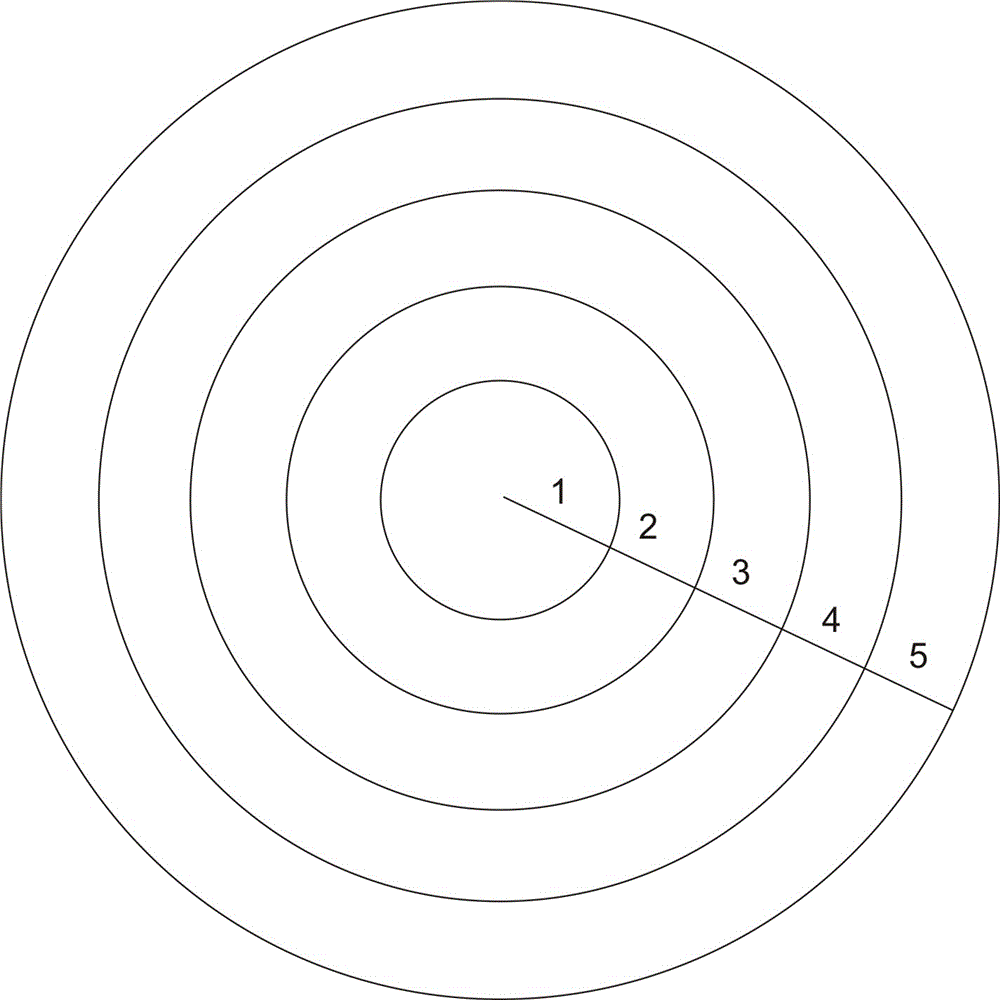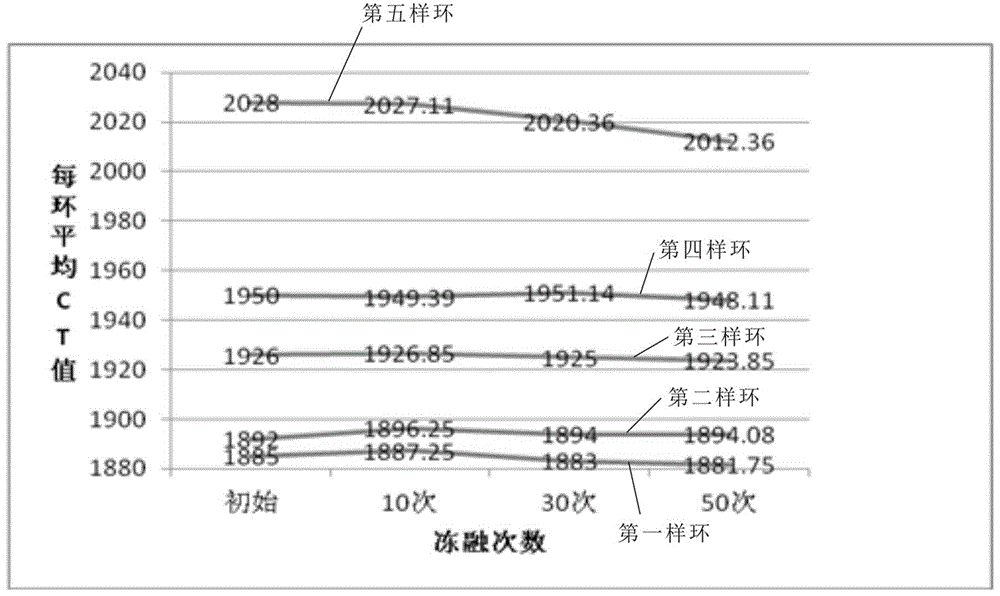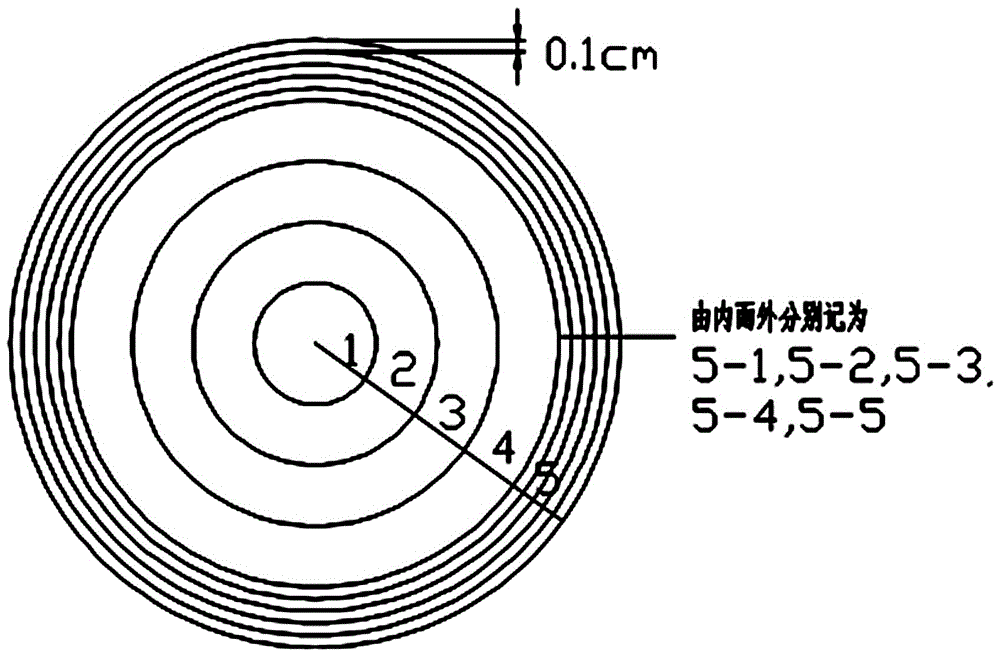Method of layer-by-layer damage analysis on rock
A rock and rock sample technology, applied in the field of layered damage analysis of rocks, can solve the problems of inability to obtain CT average value and inaccurate results, and achieve the effects of narrowing the damage range, simple operation and saving operation time
- Summary
- Abstract
- Description
- Claims
- Application Information
AI Technical Summary
Problems solved by technology
Method used
Image
Examples
Embodiment 1
[0034] Step 1: The rock sample is a cylindrical rock sample with a radius of 2.5 cm. Select a cross section on the rock sample, and divide the cross section into regions: starting from the center point of the cross section, divide 5 levels The sample loops with different radii are marked as the first sample ring, the second sample ring, the third sample ring, the fourth sample ring, and the fifth sample ring. The radius difference is 0.5 cm, such as figure 1 Shown
[0035] Step 2: Calculate the CT average CT of each sample ring in the initial state Tave(N) : Perform an initial CT scan on the circle where each sample ring is located, and get the CT value of the circle where each sample ring is located. 1 initial , CT 2 initial , CT 3 initial …CT N initial , Measure the area of the circle where each sample ring is located as S 1 , S 2 , S 3 …S N ,
[0036] CT average value of each ring in the initial state CT Tave(N) initial =(CT N -CT N-1 ) / (S N -S N-1 )
[0037] N=5;
[0038] ...
Embodiment 2
[0053] The method also includes step 5:
[0054] Step 5: The fifth sample ring where the damage to the rock is mainly concentrated by the freeze-thaw cycle obtained in step 4 is again divided into regions. Starting from the center point of the cross section, the damage concentrated parts are divided into M (M=5) ) The sample loops with equal radius difference are the 5-1 sample ring, the 5-2 sample ring, the 5-3 sample ring, the 5-4 sample ring and the 5-5 sample ring respectively. image 3 As shown, the radius difference is 0.1 cm; and then according to steps 2-4 of the above embodiment 1, the data sorted out is shown in Table 3:
[0055] table 3
[0056]
[0057] According to the data in Table 3, the average CT value of each ring-the number of freeze-thaw cycles curve graph, such as Figure 4 Shown from Figure 4 It can be seen that the CT value of sample ring 5-5 has the most obvious change, and the gap ratio has the largest change. Therefore, the damage to the rock caused by the ...
Embodiment 3
[0060] The sample ring can also be designed as a rectangle, and the n sample rings with equal radius difference are divided into a rock sample with a rectangular cross section, such as Figure 5 As shown, the analysis is performed according to the steps of the first and second embodiments above.
PUM
 Login to View More
Login to View More Abstract
Description
Claims
Application Information
 Login to View More
Login to View More - R&D
- Intellectual Property
- Life Sciences
- Materials
- Tech Scout
- Unparalleled Data Quality
- Higher Quality Content
- 60% Fewer Hallucinations
Browse by: Latest US Patents, China's latest patents, Technical Efficacy Thesaurus, Application Domain, Technology Topic, Popular Technical Reports.
© 2025 PatSnap. All rights reserved.Legal|Privacy policy|Modern Slavery Act Transparency Statement|Sitemap|About US| Contact US: help@patsnap.com



